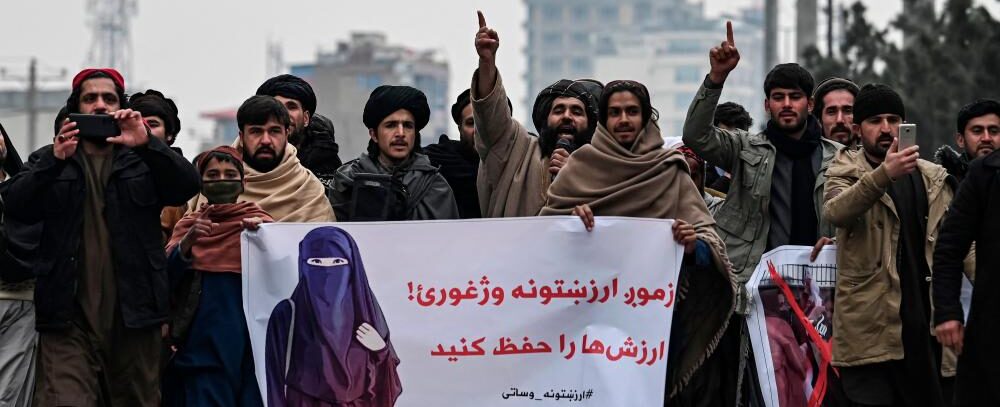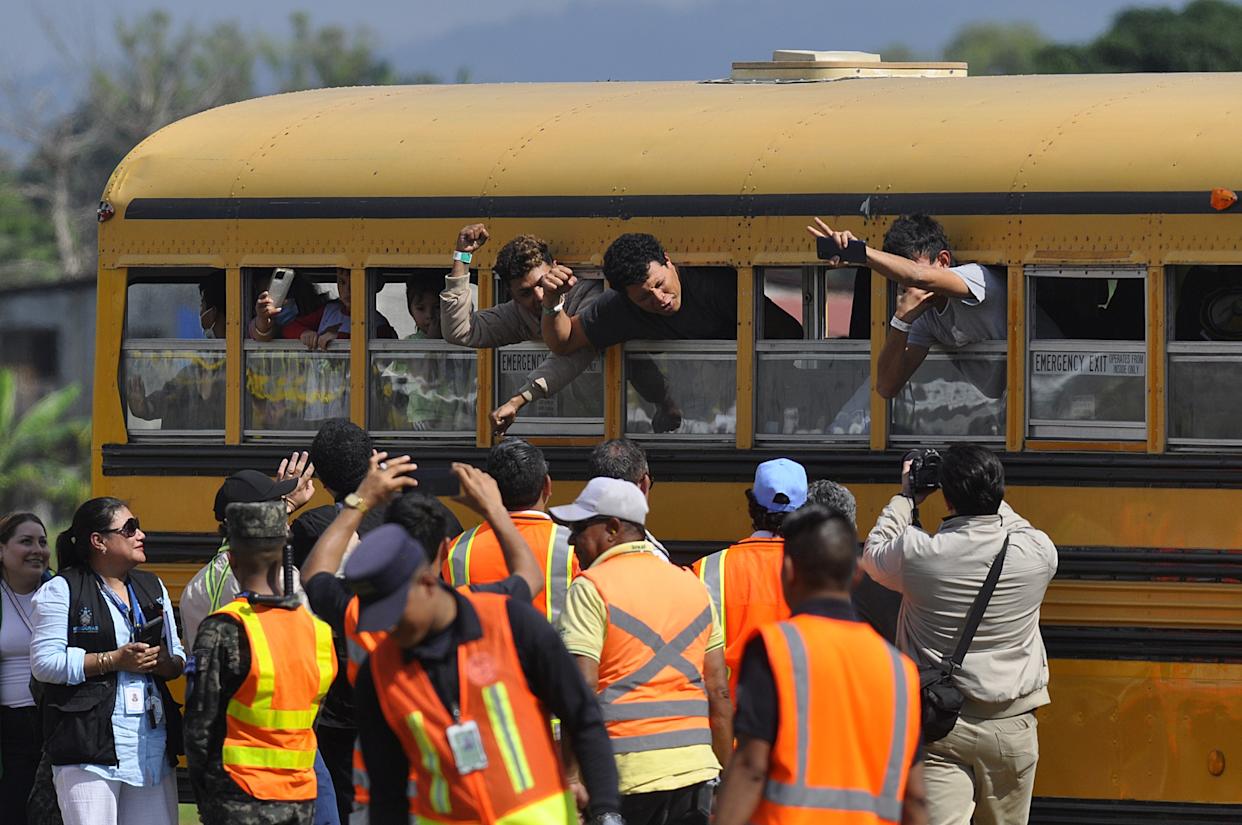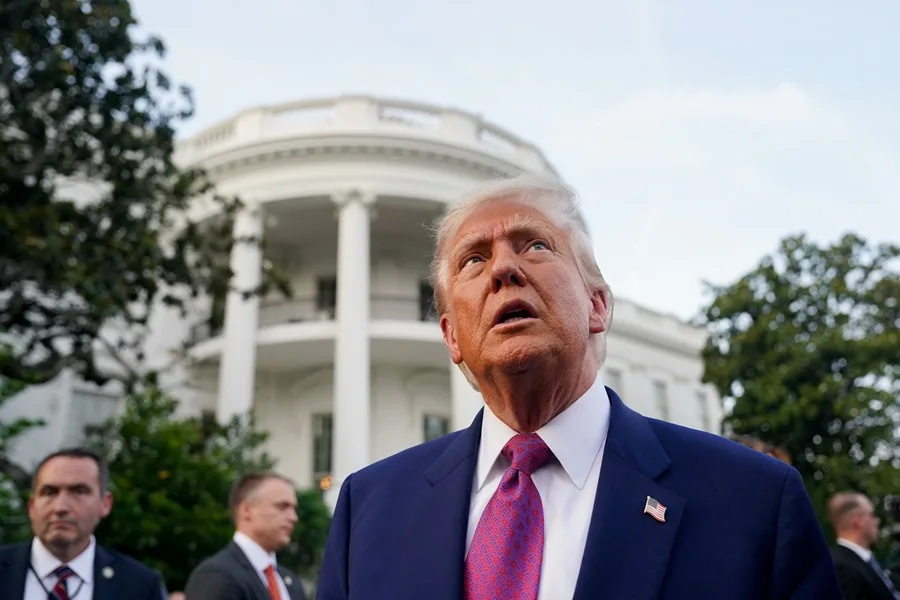International
Afghan NGO women ‘threatened with shooting’ for not wearing burqa

AFP
The Taliban’s religious police have threatened to shoot women NGO workers in a northwestern province of Afghanistan if they do not wear the all-covering burqa, two staff members told AFP.
The rights of Afghans — particularly women and girls — have been increasingly curtailed since the Taliban returned to power in August after ousting the US-backed government.
Women are being squeezed from public life and largely barred from government jobs, while most secondary schools for girls are shut.
Two international NGO workers in rural Badghis province told AFP that the local branch of the feared Ministry for the Promotion of Virtue and Prevention of Vice met with aid groups on Sunday.
“They told us… if women staff come to the office without wearing the burqa, they will shoot them,” one said, asking not to be named for safety reasons.
Women must also be accompanied to work by a male guardian, he added.
A second NGO source confirmed the warnings.
“They also said they will come to every office without prior notice to check the rules are being followed,” he told AFP.
A notice to NGOs seen by AFP did not mention the threat of shooting, but did order women to cover up.
Women in deeply conservative Afghanistan generally cover their hair with scarves anyway, while the burqa –- mandatory under the Taliban’s first regime, from 1996 to 2001 –- is still widely worn, particularly outside the capital Kabul.
Desperate for international recognition to unlock frozen assets, the Taliban have largely refrained from issuing national policies that provoke outrage abroad.
Provincial officials, however, have issued various guidelines and edicts based on local interpretations of Islamic law and Afghan custom.
In the capital on Friday, the Taliban staged a demonstration with around 300 men, who chanted “We want Sharia law”.
Holding posters of women wearing full coverings, the crowd accused women’s rights activists who have taken to the streets of being “mercenaries”.
Earlier this month, posters were slapped on cafes and shops in Kabul ordering Afghan women to cover up, illustrated with an image of the burqa.
Women are banned from appearing in television dramas and must be accompanied by a male guardian on journeys between towns and cities.
Small and scattered protests have broken out demanding women’s rights, which had improved slightly over the past 20 years in the patriarchal Muslim nation.
However, several activists told AFP they had gone into hiding in the capital this week after a series of raids led to the arrests of three women.
International
Meta Says Russia Seeks to Ban WhatsApp for Defending Secure Communication

U.S. tech giant Meta, the parent company of WhatsApp, said that Russia is seeking to ban the messaging app because it “challenges government attempts to violate people’s right to secure communication.”
Russian authorities have encouraged citizens to switch to state-backed applications, and in August they already blocked WhatsApp’s calling feature.
On Friday, the communications regulator Roskomnadzor claimed that the platform was being used to “organize and carry out terrorist acts in the country, recruit perpetrators, and facilitate fraud and other crimes.”
“If the messaging service does not comply with Russian law, it will be completely blocked,” the regulator warned.
WhatsApp remains one of Russia’s most widely used messaging services, alongside Telegram.
Moscow is pressuring both platforms to grant authorities access to user data upon request for investigations into fraud and activities the government labels as “terrorist.”
Human rights advocates fear the demand could be used to target critics of the Kremlin, President Vladimir Putin, or the war in Ukraine.
International
Archbishop Wenski criticizes Trump’s deportation policies, calls for stronger push for reform

The Archbishop of Miami, Thomas Wenski, has called for increased pressure on the U.S. Congress to advance comprehensive immigration reform and criticized President Donald Trump’s mass deportation policies, arguing that they “do nothing to help.”
“We need to apply more pressure on Congress so lawmakers can make the necessary changes. It is also important for the Administration to listen to our voice. We do not want to be anyone’s enemy—we are Americans,” Wenski said in an interview with EFE.
The religious leader, who heads one of the dioceses with the largest Latino and Haitian populations in the United States, issued a call to defend the rights of migrants. He also emphasized that the U.S. Conference of Catholic Bishops (USCCB) has maintained a strong and public stance in favor of migrants for decades.
International
Trump relaunches diplomatic push to finalize U.S.-Backed peace plan for Ukraine War

U.S. President Donald Trump announced on Tuesday that his diplomatic team will resume meetings with delegations from Russia and Ukraine in an effort to pressure both sides to accept the peace plan proposed by Washington to end the war in Ukraine.
As part of this new round of talks, U.S. Special Envoy Steve Witkoff will travel to Moscow to meet with Russian President Vladimir Putin. Meanwhile, Army Secretary Dan Driscoll will hold discussions with Ukrainian representatives to narrow differences on the remaining points of the agreement.
Trump also confirmed his intention to meet personally with Ukrainian President Volodymyr Zelensky and with Putin, though he emphasized that such meetings will only take place “when the agreement is fully finalized or in its final stage.”
The president claimed that his administration has made “tremendous progress” toward resolving the conflict and reiterated that the war “never would have started” if he had been in the White House at the onset of the crisis.
The U.S.-backed peace plan consists of 28 points and has been revised following feedback from both sides. According to Trump, only “a few points of disagreement” remain under active discussion.
One of the most controversial aspects of the proposal is the suggestion that Ukraine cede parts of the Donbas region to Russia and limit the size of its armed forces. Kyiv is working closely with Washington to soften these clauses in search of an arrangement that does not compromise its sovereignty or security.
With this diplomatic push, Trump aims to solidify his role as the main mediator in the conflict and steer the war toward a political resolution after years of devastation, humanitarian crisis, and rising global geopolitical tensions.
-

 Central America2 days ago
Central America2 days agoTrump Pardons Former Honduran President Hernández and Warns of Aid Cuts Ahead of Election
-

 Central America4 days ago
Central America4 days agoPanama reinforces security with new helicopters and Super Tucano Aircraft purchases
-

 Central America4 days ago
Central America4 days agoTrump urges hondurans to back conservative candidate Nasry Asfura in november elections
-

 International4 days ago
International4 days agoArchbishop Wenski criticizes Trump’s deportation policies, calls for stronger push for reform
-

 Central America1 day ago
Central America1 day agoHonduras’ China–Taiwan Future Hinges on Sunday’s Presidential Election
-

 Central America4 days ago
Central America4 days agoWashington calls for oversight as Honduras faces allegations of electoral interference
-

 Central America5 hours ago
Central America5 hours agoHonduras Extends Voting by One Hour Amid High Turnout, CNE Announces
-

 International2 days ago
International2 days agoMeta Says Russia Seeks to Ban WhatsApp for Defending Secure Communication






























